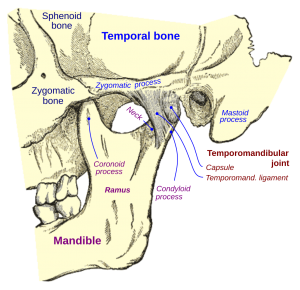Severe grinding-clenching is destructive: 1) You will lose all your teeth 2) You will spend thousands dollars repairing damage to just teeth 3) Your will spend weeks-months-years in jaw pain 4) Your jaw may lock up (1 finger opening) 5) Destroys all 4 structures chewing system
Hidden movement disorder: 1) Occurs mostly lighter stages sleep 2) Powerful muscle contractions 3) Significant loading of joint w/ movement 4) Tearing Lateral Ligament disc TMD 5) Decreases lubrication joint
Research this movement disorder before your..... 1) Jaw locks 2) Chewing pain 3) tension headaches 4) Atypical Toothache 5) Earache w/o infection
Parafunction comes in 3 levels: 1) Mild 2) Moderate 3) Destructive
MISCONCEPTION: Grinding & clenching is all same. NO, there is a difference type, power, duration, frequency, damage, and causes.
Mild to moderate grinding-clenching should be managed by dentist. The only tool available to dentist is dental appliances. This reduces the destruction to teeth, but does not treat cause.
FACT: The soft biteguards increase clenching & grinding. Increase grinding in mild cases is not problem, increasing grinding in destructive grinding can be disastrous.
Destructive grinding is a complex movement disorder.
Reduction Destruct Grind requires Orofacial Pain Specialist and chewing system orthopedic team. The team utilizes 11 tools to "reduces" the destructive effect of grind & clench. Unless, you are willing loose your teeth in 50-60-70 and pay over million dollars chasing pain ghost, better call Orofacial pain specialist.
Names of destructive parafunction: 1) Movement disorder 2) Restless mouth syndrome 3) Gnashing (in bible) 4) Severe grinding 5) bruxism
High anxiety and significant stress can aggravated the grinding-clenching, but it is not cause.
In destructive grinding, the nightguard needs to be provided before you put your expensive dentist in the mouth to protect the investment. Otherwise, every 5-7 years you have to redo it at cost of thousands dollars. If this confuses you, you need to take courses on destructive grinding before you waste the patients money and they still loose their teeth.
Diagnosis grind-clench in children:
- Wear on baby teeth
- Early loss baby teeth
- Hear child grinding
- Tension headaches-upon awakening
- IBS-Anxiety-Restless-Reflux-Irritable
- Wear first molar
- Chip-broken-crack teeth
- Breaks retainers-appliances-spacers-Hawleys
- Orthodontist has problems with moving teeth
- Margin of filling break down
Destructive Parafunction (grinding/clenching):
- Frequency, power, and duration are high
- Damage is done at night (mostly)
- Power at night is 6 times daytime power
- Damages all 4 chewing system structures
- Damages jaw joint & muscles
- Behind most failed dentistry
- Restrictive opening-limitations opening-Locked jaw
- Causes popping clicking
Destructive Grinding is destructive force behind most of pedodontics failures
- Broken filling 2. Broken Hawley 3. Worn out Invisalign 4. Broken retainers 5. Wear 1st molarSensitivity 6. Failed SSC-pulpotomy 7. Mobile teeth 8. Difficult keeping teeth straight 9. Retainer/braces discomfort 10. Relaspe after braces
There is no appliance that can manage destructive grind/clench by itself!
Why is destructive grinding-clenching not diagnose?
- No one looks at chewing system as whole
- No one collects all hints
- TMD Destruction: teeth, bone, muscle, joint
- Chewing system is fragmented into specialities
- Destruction to joint & muscle not taught dental school
- Insurances do not adequate cover TMD
- Insurance limits coverage of Integrative tools
- Pedodontist sees teeth
- Pedo school focuses on teeth and alignment
Pedodontics complex case: why refer
- Pedo training is acute dental pain, not chronic pain
- Chronic pain requires team
- Chronic pain team can manage more complex cases
- Insurance & government insurance cover chronic pain poorly
- Destructive grind/clench is movement disorder
- Damage is joint muscle not teeth



